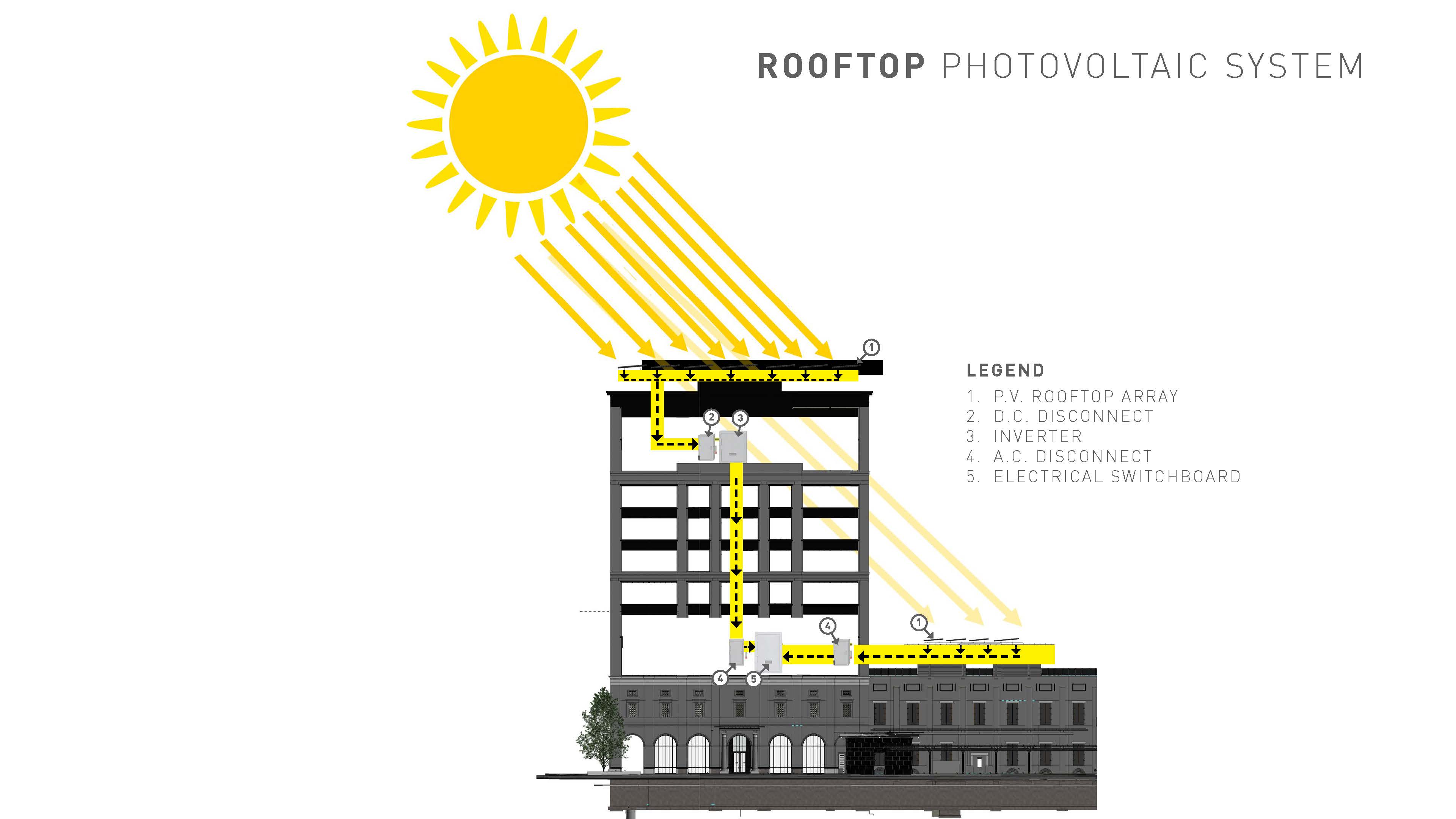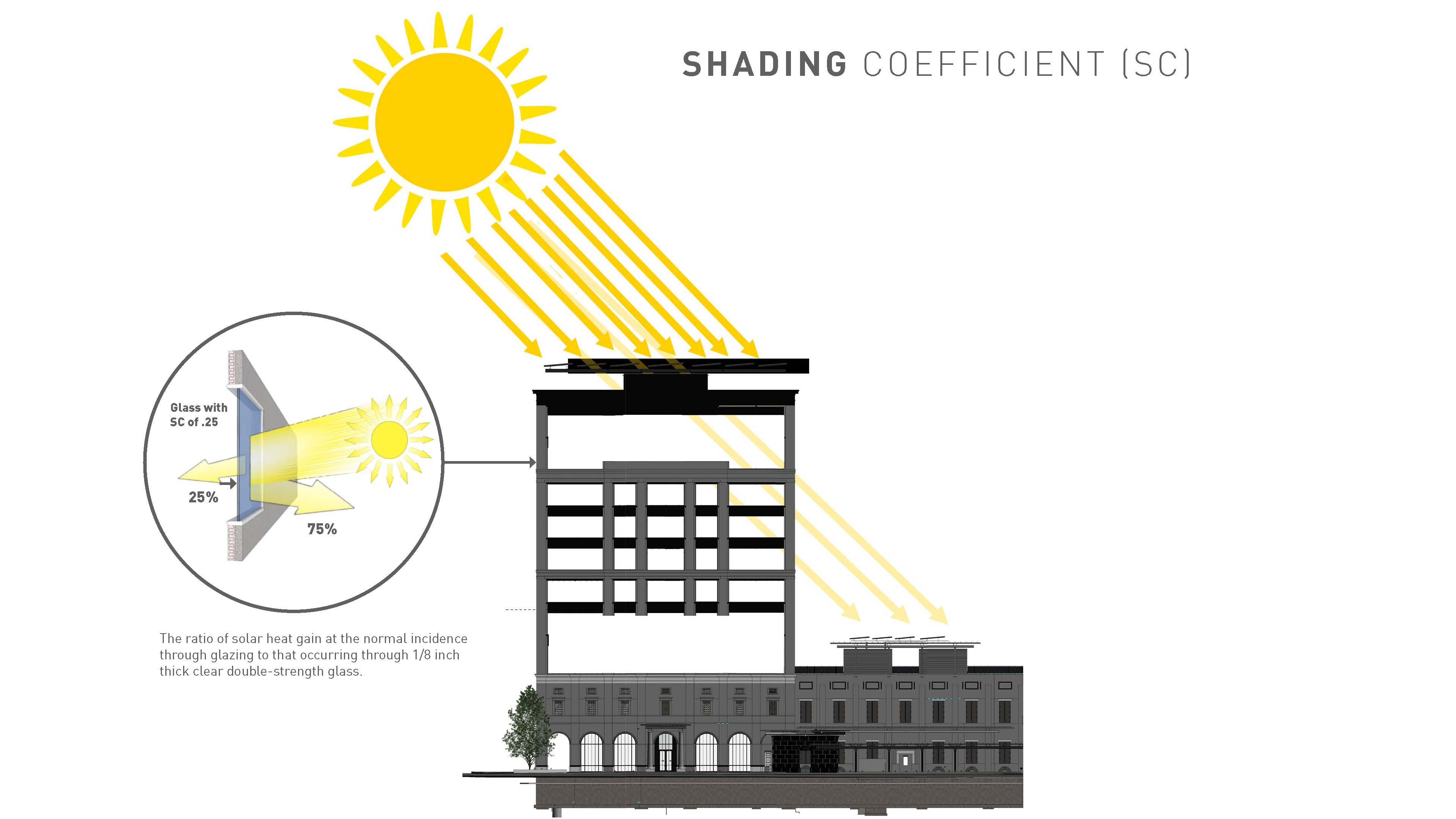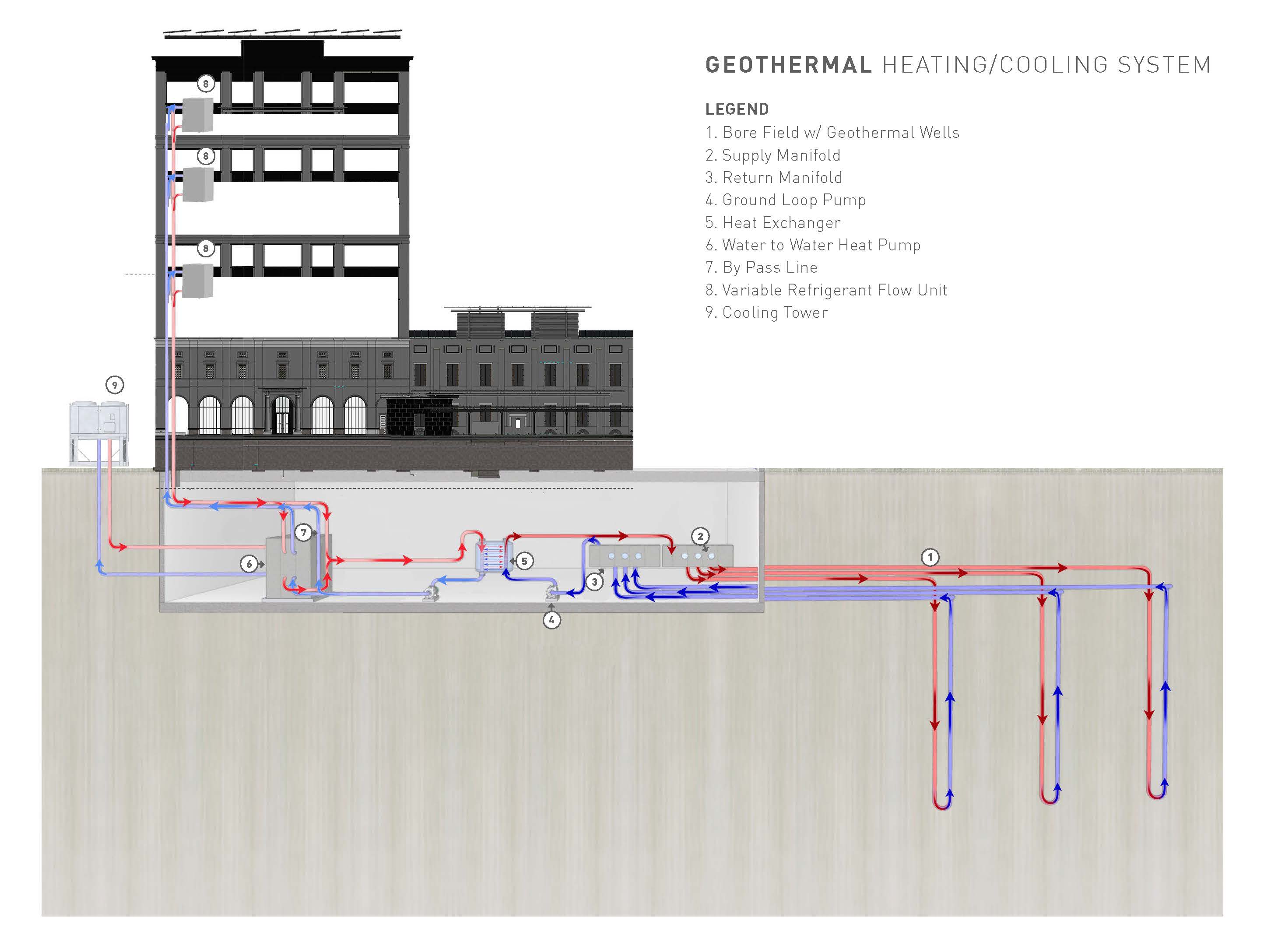Energy Solutions
This building uses 96% less energy from our local utility because of the many demand and supply side solutions included in the design.
Sustainable Energy Supply
In 2015, Credit Human made a major commitment to sustainability by outfitting most of our San Antonio branch locations with solar power in one of the largest commercial solar projects in the city. We continued that commitment to clean energy by installing high efficiency photovoltaic solar panels on the new building. Dramatic improvements in materials and decreases in manufacturing and installation costs are making photovoltaic solar energy systems more powerful and economically feasible. Photovoltaic systems convert the energy in sunlight directly to electrical energy to power the building. The project includes 2,638 photovoltaic panels totaling 1 mega-watt of photovoltaic capacity on the roofs and parking structure of the building. This will supply roughly 40% of the annual electricity demand.

Reduced Energy Demand
Developing energy-efficient buildings begins with a high-performance envelope. The building envelope consists of the exterior walls, windows, and building structure. Buildings with a highly efficient building envelope reduce costs for the upfront and operating costs of heating and cooling equipment provided in the building. The selection and placement of high efficiency windows can net incredible gains in energy efficiency and occupant comfort. The Credit Human building features walls with 4” of continuous insulation and a thermally broken window system, a type of window construction in which there is a barrier between the inner and outer window frames that limits the heat transfer through the window. The wall system doubles the insulation compared to a Texas code baseline design. The glass selected by Credit Human has a shading coefficient of 0.25 which is significantly more efficient than code minimum glass.

The earth beneath our feet can be a source of heating and cooling as well. Utilizing the constant, year-round temperature of the earth as both a heat source (in winter) and a heat sink (in summer) the Credit Human building has installed 150 geothermal wells on the site. The geothermal wells circulate water through a network of tubes 300 feet below the surface collecting and dissipating heat. The underground geothermal system will provide heat transfer for 40% of the annual building cooling load and 100% of the annual heating load. This will save an estimated 1.25 million gallons of water each year by reducing the cooling towers load.

A VRF system utilizes high efficiency condensing units and heat recovery boxes to minimize energy usage while providing increased occupant control and comfort for our employees. The system accomplishes this by allowing utilizing energy from other zones to heat and cool each other. For example, if Zone 1 is in cooling and Zone 2 is in heating, the VRF system takes the energy discharged into the system from Zone 1 and utilizes it to heat Zone 2. In addition to the energy savings, material is saved during installation as well as the fan coils utilized eliminate the need for bulky ductwork throughout the space. Click here for more information about the highly efficient HVAC system.
The building utilizes a hybrid condenser water system comprised of a geothermal bore field, cooling towers, fans, and pumps, to optimize the energy efficiency of the building. The cooling towers were selected with low static, high efficiency fans to maximize the amount of energy transferred per horsepower. The condenser water pumps were selected to provide the maximum efficiency and are provided with intelligent on board VFDs to match the water flow of the towers and central system to the building load. With these strategies in place, this building is highly efficient, reducing energy and water consumption.
We’ve incorporated other energy-efficient fixtures and technologies throughout the building including LED lighting, advanced plug controls, and energy star appliances. LED lighting technology is far more efficient than traditional incandescent and fluorescent sources found in office spaces. LED lighting also has up to 10 times the lifespan of comparable traditional sources. Advanced plug load controls help save energy by switching off typical office loads such as computer monitor when spaces are unoccupied.
